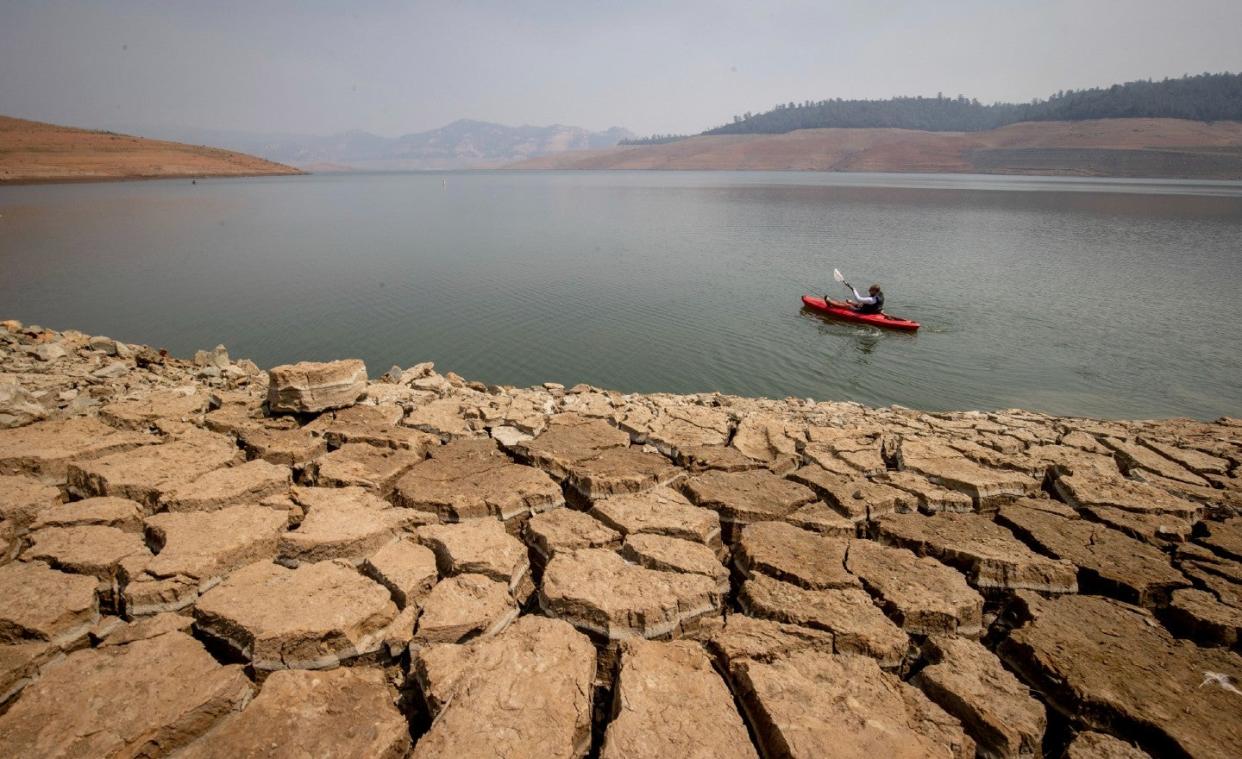Newsom issues order tightening water conservation amid worsening drought

- Oops!Something went wrong.Please try again later.
Following the three driest months in California's history, Gov. Gavin Newsom (D) issued an executive order on Monday calling for stricter local conservation measures while proposing a ban on decorative turf irrigation.
The executive order calls on local water suppliers to shift to "Level 2" of their individual Water Shortage Contingency Plans, which involve taking preparatory actions for water shortage levels of up to 20 percent, the governor's office said.
"While we have made historic investments to protect our communities, economy and ecosystems from the worsening drought across the West, it is clear we need to do more," Newsom said in a statement.
Although water conservation action plans vary among local agencies, for many communities, the shortages could mean that residents will need to decrease the number of days that water vegetation outdoors, according to the governor's office.
Newsom also directed the State Water Resources Control Board to consider the adoption of regulations that would ban irrigation of "non-functional" turf, such as decorative grass adjacent to industrial and commercial buildings. Such a prohibition would not include residential lawns or grass used for recreation on school grounds, sports fields and parks, according to the order.
Enforcing such a ban would result in potential water savings of several hundred thousand acre-feet - with a single acre-foot of water serving the needs of about three households annually, the governor's office said.
The Water Board must evaluate the adoption of the ban by May 25, per the order.
Within the executive order, Newsom also encouraged urban water suppliers to go conserve more than is required of them and "voluntarily activate more stringent local requirements based on a shortage level of up to 30 percent."
In addition, the governor called upon state agencies to submit funding proposals that would bolster California's short- and long-term drought response. Such response measures include emergency aid to communities facing shortages, support for groundwater recharge and wastewater recycling, and efficiency improvements.
The executive order also minimizes red tape so that vulnerable communities can access emergency hauled or bottled water immediately. Meanwhile, permitting authorities will need to coordinate with local groundwater agencies to ensure that newly proposed wells do not harm existing wells or infrastructure, according to the order.
As far as wildlife and fish are concerned, the order expedites state agency approvals to protect these animals in cases where drought conditions threaten their survival, per the order. Newsom also directed the Water Board to expand site inspections, with the goal of identifying spots where illegal waterway diversions are occurring.
"Amid climate-driven extremes in weather, we must all continue to do our part and make water conservation a way of life," the governor said.
Adel Hagekhalil, general manager of the Metropolitan Water District of Southern California, applauded Newsom's executive order, stressing that local agency conservation actions "will help residents and businesses make these much-needed cuts and stretch reserves."
"Our drought emergency shows no signs of lifting," Hagekhalil said in a statement. "We appreciate the governor's recognition that each community knows best what measures will spark the greatest conservation among its residents, rather than taking a one-size-fits-all approach."
Hagekhalil likewise expressed support for ending "the wasteful practice of watering non-functional turf."
"It is time for us all to recognize that, with our water supplies so stressed by drought and climate change, we should no longer be using precious water to nourish grass that no one plays on, no one walks on and only serves ornamental purposes," he added.

